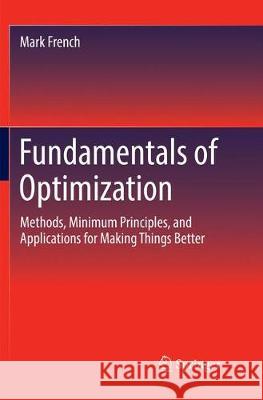Fundamentals of Optimization: Methods, Minimum Principles, and Applications for Making Things Better » książka
topmenu
Fundamentals of Optimization: Methods, Minimum Principles, and Applications for Making Things Better
ISBN-13: 9783030094263 / Angielski / Miękka / 2019 / 249 str.
Fundamentals of Optimization: Methods, Minimum Principles, and Applications for Making Things Better
ISBN-13: 9783030094263 / Angielski / Miękka / 2019 / 249 str.
cena 219,73 zł
(netto: 209,27 VAT: 5%)
Najniższa cena z 30 dni: 218,20 zł
(netto: 209,27 VAT: 5%)
Najniższa cena z 30 dni: 218,20 zł
Termin realizacji zamówienia:
ok. 20 dni roboczych.
ok. 20 dni roboczych.
Darmowa dostawa!
Kategorie:
Kategorie BISAC:
Wydawca:
Springer
Język:
Angielski
ISBN-13:
9783030094263
Rok wydania:
2019
Dostępne języki:
Ilość stron:
249
Waga:
0.41 kg
Wymiary:
23.37 x 21.08 x 1.27
Oprawa:
Miękka











